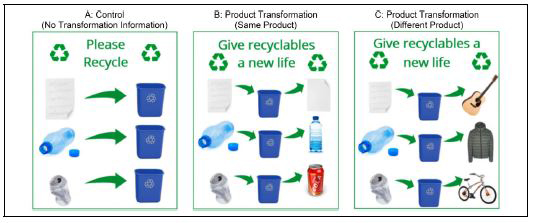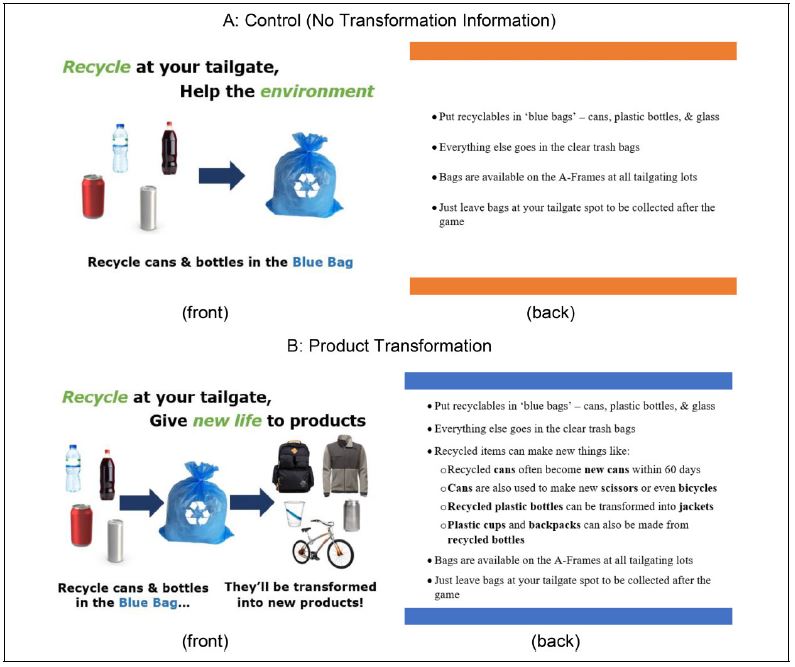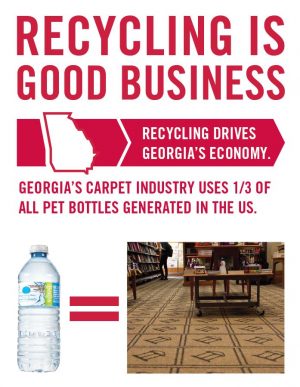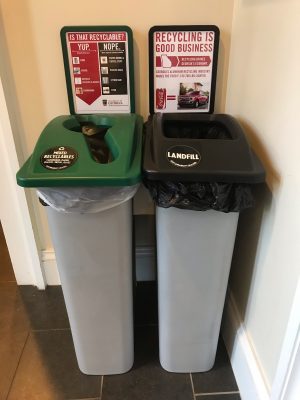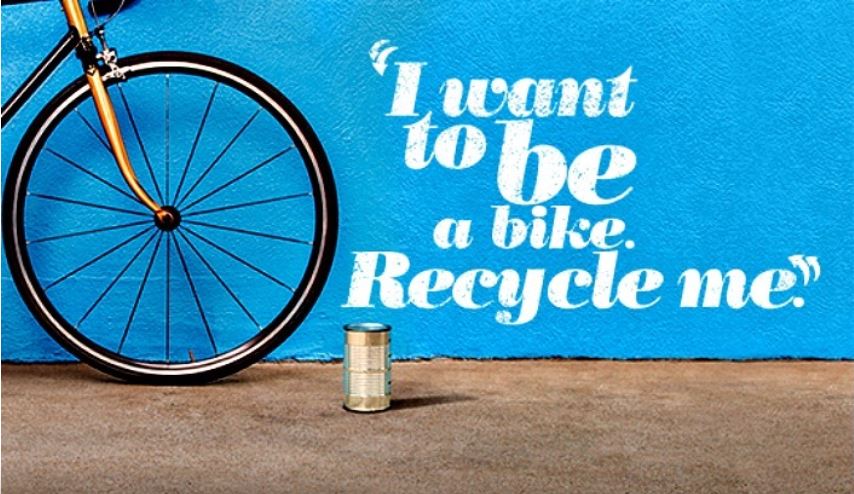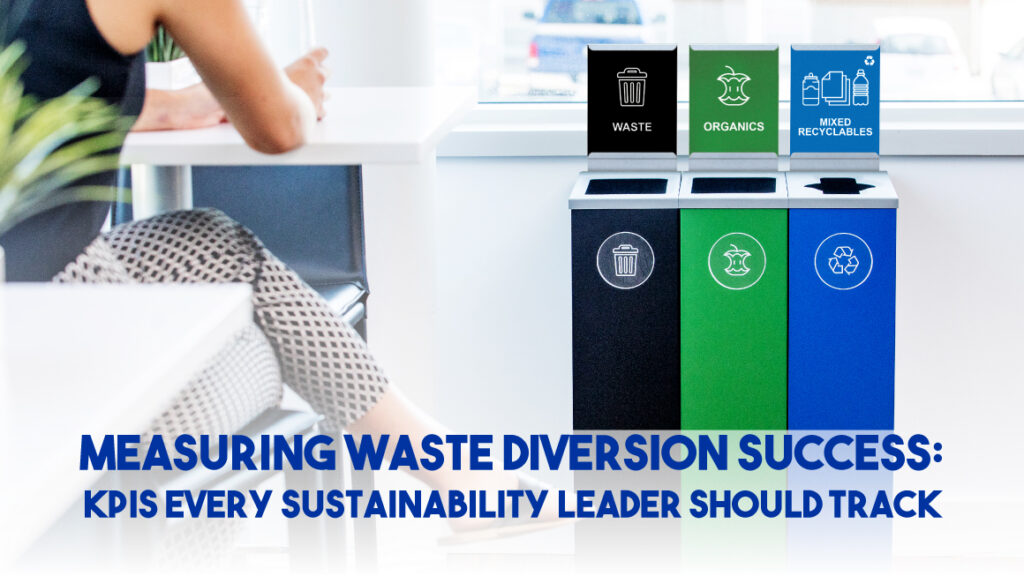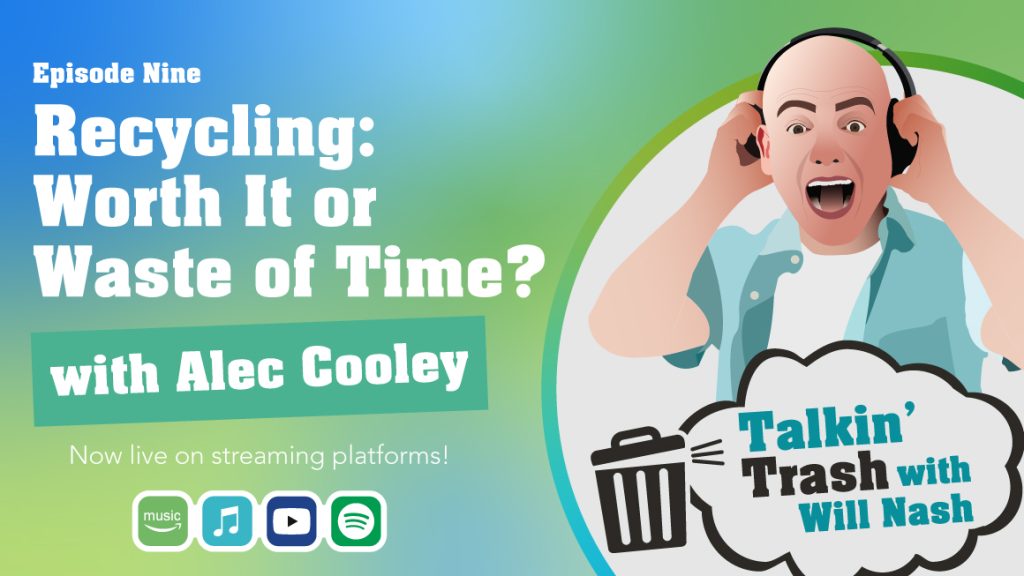How do you motivate someone to recycle?
You tell them what happens to it!
I got my start in the recycling field as a student volunteer in the early 90’s. Every week we set up a tabling display on my university’s quad that talked about the environmental benefits of recycling.
That message seemed obvious. It resonated with me personally as well as the other environmentally conscious students we spoke to. What we only slowly learned, and what most recycling educators now know is that this environmentally-focused message has little impact on the 80% or more of people who aren’t predisposed to respond to environmental issues. Our tabling efforts were a classic example of preaching to the choir.
Recycling is easy…right?
As much as we may have wanted people to care about recycling and the environment, the truth is that recycling educators have only one very specific job: get people to place recyclable items in the recycling bin. Simple enough, right? …sorry, that was a bad joke.
Getting people to recycle is, of course, complex. Even with a multitude of surveys showing a strong majority of people support recycling in concept, more than half of all recyclables end up in the trash.
These disparate facts underline several key points that should guide all recycling planners: The number one task is to remove barriers that prevent people from recycling. Bins have to be convenient to use. People need clear, easy to comprehend information about what to recycle.
Even with these barriers addressed, turning “sometimes recyclers” into “all-the-time recyclers” requires finding ways to motivate people. Again, the goal isn’t to make them care, but to simply make it a habit.
How do you make people care about recycling?
While there are no silver bullets, a number of behavior change techniques have been shown to push people, bit-by-bit to recycle a greater percentage of the time. Some of these are well known. Community-Based Social Marketing (CBSM), is a methodology developed by Doug McKenzie-Moore in the 1990s that involves identifying the barriers preventing people from doing an activity and then developing corresponding strategies to overcome them. Programs like RecycleMania leverage the power of competition between rival colleges to motivate students and staff. Other campaigns like America Recycles Day ask people to make a personal commitment to recycle.
To the arsenal of techniques and messages, we can now add a new one: telling people what happens to the items they recycle.
An academic paper published last year, Knowing What it Makes: How Product Transformation Salience Increases Recycling documents how simply communicating what scrap items get recycled into (“product transformation”) can have a measurable impact motivating people to recycle more.
Reprinted with permission from the American Marketing Association © 2019.
The paper’s authors, Karen Winterich, Gergana Nenkov, and Gabriel Gonzales, were recently awarded the Marketing Science Institute and American Marketing Association’s 2019 H. Paul Root Award, which recognizes significant contributions to the advancement of the practice of marketing. They will present their paper this Tuesday at the AMA’s annual conference. I was honored to be asked to participate in a conference panel discussing the impact of their findings.
The paper actually covers a number of separate lab and field studies that all looked at this central question. In the first, volunteers were given paper to doodle for a minute, ostensibly to clear their minds. Next, they were randomly assigned to look at one of three different print advertisements for recycling. The control ad simply talks about how waste items can be recycled, while the other two go an extra step showing how those items are then turned into new items. Volunteers were then asked to fill out a survey explaining how the ad influenced their thinking about recycling. At the end, they were told to clean their station, which included discarding their scratch paper. Now, If you’ve read enough papers about recycling behavior you probably already know the real test was not how they responded to the survey, but rather which bin they tossed their scratch paper into. And yes, the volunteers exposed to the product transformation ads were significantly (20%) more likely to use the recycling bin than those viewing the control ad.
Reprinted with permission from the American Marketing Association © 2019.
In another study, the authors purchased two different sponsored search ads that appeared when people googled terms related to denim jeans. Both ads directed people to a company that recycled old jeans. The control ad simply said, “Give jeans to be recycled | Recycle jeans you don’t use.” The second said, “Transform jeans to insulation | Recycle jeans you don’t use”. The study then measured the click-through rate for both ads, finding the second product transformation ad attracted an average .26% click-through rate per appearance to the control ad’s .18%. The numbers may not appear significant, but they are. People were much more likely to engage in the transformation-based ad.
Two other studies took the product transformation question out of the lab and into the field, targeting two of the harshest possible conditions for recycling behavior: football tailgate lot and a college dorm trash room. The tailgate study involved student recycling ambassadors engaging fans at a 2018 Penn State game. Fans in one section of the lot received standard information about how and where to recycle, while the second section was also informed about what items were turned into. The weight of recyclables collected after the game was compared to the weight of trash. Tailgaters in the section receiving the product transformation message achieved an average diversion rate of 58.1% compared to an average 19% rate in the control section.
The dorm study tested two versions of signage placed above trash and recycling bins on two separate floors. In this case, waste audits were done to measure the percentage of recoverable items found in the landfill-bound trash bins. While trash from the control floor of the dorms showed 62.9% of the contents were recoverable, only 51.5% of the trash was recoverable for the floor exposed to the product transformation message.
The Winterich, et al. paper is not alone showing that people respond to being told what items get turned into. In an unrelated project, Busch Systems partnered with the University of Georgia’s Office of Sustainability in 2019 to test the impact of different sign messaging. That project involved adding special sign frames on top of existing recycling bins in multiple academic buildings. Product transformation was just one of three types of messaging tested, the others being an informational listing of recyclable and non-recyclable items and a social norming message tied to the school’s mascot. Waste audits measured the percentage of recyclables found inside landfill-bound trash bins before and after the signs were installed. The locations with product transformation signs showed a 13.18% reduction in the number of recyclables tossed into trash bins. The Busch Systems / UGA study went an additional step to look at the impact on contamination rates. While the other sign messages resulted in as much as a 25% reduction in non-recyclables items contaminating recycling bins, audits of the product transformation message locations actually showed a slight uptick of 2.19%. More research is needed to understand if this was a one-off result or if product transformation messages could have the unintended consequence of encouraging “wishful recycling”.
The main takeaway
So what’s the big take away from this research? The Winterich, et al. studies approached the topic with a direct focus on the underlying behavioral science. The paper explains how exposure to information on what an item can be turned into functions as an “episode of inspiration”. As the paper explains, “Key to our theorizing is that inspiration is triggered by an event, object, message, or another stimulus in which ‘new or better possibilities are revealed’”. In this case, that better possibility is an outcome for the consumer’s waste, which in turn can function as an “activation component” inspiring people to act. I encourage folks to read the report for a deeper understanding of the science involved.
Communication and messaging is key
As a “practitioner” of course, my interest is to understand how these results can be translated into successful recycling programs. To understand the power of the product transformation message, I think it helps to consider an inverse of the underlying message. We’ve all heard a version of the urban myth (and occasionally true) that says the same truck picks up both trash and recycling, and that it all gets landfilled. Whether this is a conspiracy theory or not, the person believing this to be true naturally asks whether it’s worth their effort to sort recyclables if it all gets trashed in the end. No one wants to feel they’re wasting their time. And because perceptions, once they take root can be so hard to change, news stories or even rumors about recyclables getting landfilled can lead to a significant, long term reduction in recycling behavior.
I think product transformation messaging can be an antidote to the apathy many people feel toward recycling. Even without the “all goes to the landfill” narrative, the nature of how trash and recycling are collected divorces people from any impact of their actions. We “throw away” waste items. Something that goes “away” becomes an abstraction. Telling people a plastic bottle will be turned into a new carpet, or a steel can transformed into the superstructure of an office building, returns waste items from an abstraction to something tangible.
Recycling educators looking to harness this messaging strategy should check out the “I Want to Be Recycled” PSA campaign from the Ad Council and Keep America Beautiful. The long-running campaign, with a range of TV, radio, print, and social media ads, is firmly rooted in the product transformation message. Following the Ad Council’s model, the ads are primarily run on donated media platforms, though local recycling educators can also use campaign assets within set guidelines.
It may not be a priority to get people to embrace the benefits of recycling, but they do need to feel their effort makes a difference in some fashion. By connecting the act of recycling to the new items that result, product transformation messaging validates that action. It affirms that, yes, “it is worth it”.
Do you have experiences, thoughts, or questions on this topic? I’m interested to network and share perspectives. Reach out to me at AlecC@buschsystems.com.

